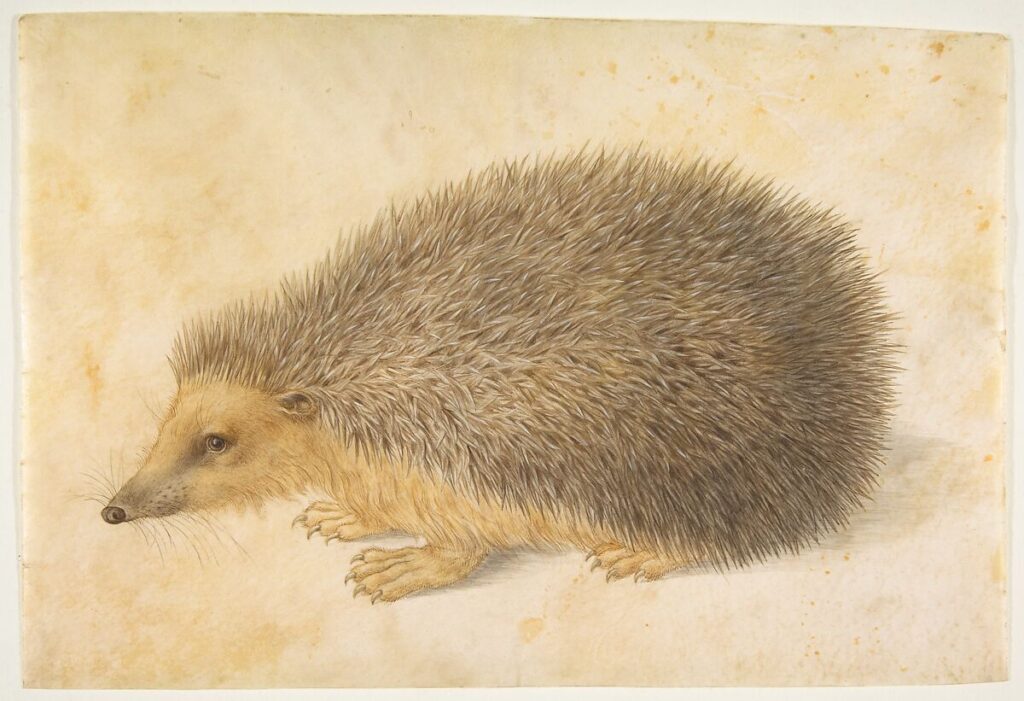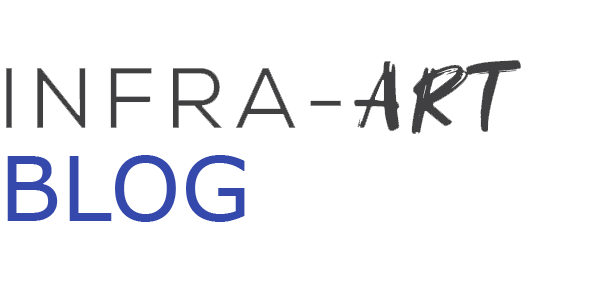by Lucian Cristian Ratoiu — Last updated on September 24, 2025 — Reading time: 16 min
Article sections
» Origins and early materials » The rise of watercolor in Europe » The British golden age of watercolor » Modernism, innovation, and contemporary practice » Further reading and resources
This article traces the historical development of watercolor painting from its earliest material formulations in East Asia to its refinement and institutional recognition in Europe and beyond. It examines the technical evolution of the medium—its reliance on transparency, pigment chemistry, and binding agents—and its transformation from manuscript illumination to a major vehicle of artistic expression. Special emphasis is placed on the British “Golden Age of Watercolor” (1750–1850), when the medium attained new aesthetic and social prestige through artists such as Girtin, Turner, and Cotman, as well as through the formation of professional societies. The discussion extends to the global dissemination of watercolor in the nineteenth century and its modernist reinterpretations in the twentieth, highlighting how material innovation and artistic experimentation have sustained watercolor’s enduring appeal in contemporary practice.
Origins and Early Materials
Valued for the brilliance and luminosity of its transparent hues, watercolor is a water-based medium typically brushed onto white paper. It is sold in small cakes known as pans or in tubes of concentrated paint and is made from finely ground pigment mixed with water and gum Arabic—a binder that evenly disperses the pigment and helps it adhere to the surface. Modern watercolors form washes with just a small amount of water, making them easier to use than earlier formulations.
Art theorist Max Doerner observed that this form of painting relies on the glazing quality of its colors, which are applied in the thinnest possible layers. Each glaze depends on a light ground; in pure watercolor painting, all illumination comes from the support—usually paper.
In their Encyclopedia, Gettens and Stout explained that “watercolor” is a modern term describing a standardized mixture of pigment and water-soluble gums, most often derived from Acacia Senegal or Acacia arabica wild. Traditional watercolor paintings are executed thinly with this mixture on paper supports.
According to Ralph Mayer, the word aquarelle—though uncommon in American and British usage—specifically refers to this transparent watercolor technique, distinguishing it from opaque media such as gouache or casein. Mayer noted that transparent watercolor can be incorporated into opaque techniques like gouache or pastel, provided the overall character remains consistent. Conversely, adding opaque effects to primarily transparent watercolor should be done with restraint; careless applications often produce unpleasant results. While small touches of zinc white or other opaque pigments may enhance a composition, the watercolor purist recognizes clear limits if the luminous quality of the medium is to be preserved.
Elizabeth Barker similarly defined watercolor as a medium named for its principal component. It consists of pigment dissolved in water and bound with a colloid agent—typically gum Arabic—and applied with a brush to a support such as vellum, fabric, or, most commonly, dampened paper. When the water evaporates, the resulting mark remains transparent, allowing light to reflect through the paper to create a luminous effect. Watercolor is often combined with gouache (or “bodycolor”), an opaque water-based paint containing a white element such as chalk, lead, or zinc oxide.
Pip Seymour traced the origins of watercolor to the cake colors of China and Japan—compressed pigment blocks that dissolve in water. The binders for these early paints were typically fish or animal glues, and the paints were widely used on silk and bark- or rice-based papers. The closest modern equivalent is compressed Chinese ink, which releases color when rubbed with water on an ink stone. In Japan, watercolor paints are still produced using pigments bound in deer-skin glue.

The Rise of Watercolor in Europe
In medieval Europe, water-based paints bound with resoluble gum, glair (egg white), or animal glue were employed in illuminated manuscripts. Albrecht Dürer (1471–1528) was among the first artists to free gum tempera (aqueous gum binder plus pigment) from its purely decorative use. By the 17th century, Dutch artists expanded watercolor’s potential through landscape painting.
The British popularized watercolor toward the end of the 18th century, using it to document the “Grand Tour” of Europe—from the ruins of Italy to the Alpine vistas. Initially, watercolor served mainly as light tints over pen drawings, but it evolved into a more expressive medium through early innovators such as Thomas Girtin (1775–1802) and Francis Towne (1740–1816). Each summer, Girtin traveled across Britain to make landscape studies, later refined in his studio. He favored broad washes of color with minimal detail—often layering bold, transparent color over a monochrome underpainting. Towne’s Alpine sketches, created during his 1780–81 tour of Italy and the Alps, reveal his method: crisp pen-and-ink drawings paired with harmonious flat washes.
While Girtin’s art reflected traditional watercolor approaches rooted in observation and topography, his contemporary and rival J.M.W. Turner (1775–1851) revolutionized the medium. Although Turner began with topographical studies, his experience with oil painting inspired increasingly dramatic, atmospheric watercolors that pushed the medium’s expressive limits. His most vivid works were spontaneous sketches made directly from nature, while his larger exhibition pieces demonstrated a bolder, more elaborate style, stretching watercolor and bodycolor to their furthest expressive potential.
Watercolor painting became a fashionable pastime among the English gentry. In response, early color manufacturers such as Rowney and Winsor & Newton began producing moist watercolors, which could be easily re-dissolved and conveniently carried in compact painting boxes for outdoor sketching trips. Before this innovation, watercolor paints were sold only as hard, compressed cakes that yielded flat, matte, and rather dry washes.
In her study on the influence of watercolor in Britain between 1750 and 1850, Elizabeth Barker notes that the medium is now most closely associated with Britain during this era—the so-called Golden Age of Watercolor—though the technique of water-based painting dates back to ancient times and has a long history across many cultures. In the West, European artists employed watercolor during the Middle Ages to decorate illuminated manuscripts and to color maps, later using it during the Renaissance for natural studies and portrait miniatures.
In Britain, the watercolor tradition began with nearly monochromatic works: topographical drawings in graphite or ink, tinted with limited washes of color by artists such as William Taverner (1703–1772), Paul Sandby (baptized 1731–1809), Thomas Hearne (1744–1817), Michael “Angelo” Rooker (1746–1801), and Thomas Malton (1748–1804). A variant form of monochrome landscape drawing—where a design in dark ink was entirely overlaid with a single tonal wash—was developed by the influential drawing instructor Alexander Cozens (1717–1786) and later adopted by Joseph Wright of Derby (1734–1797).
While artists such as Thomas Rowlandson (1757–1827) continued to produce tinted drawings into the nineteenth century, others began to reject the conventions of firm outlines and pale hues in favor of more painterly techniques using fluid washes of vibrant color. For painters like Jonathan Skelton (active 1735–59), Francis Towne (1739–1816), William Pars (1742–1782), Thomas Jones (1742–1803), John “Warwick” Smith (1749–1831), and most notably John Robert Cozens (1752–1797)—son of Alexander Cozens—a period of study in Italy inspired this stylistic transformation. Meanwhile, artists such as J. M. W. Turner (1775–1851) and Thomas Girtin (1775–1802) drew influence from both Cozens’s atmospheric works and the broader traditions of oil painting.

Around 1800, a new Romantic watercolor style emerged, marked by freer brushwork—often on rough-textured paper—and a focus on capturing fleeting atmospheric impressions. John Constable (1776–1837) used watercolor to document cloud formations at specific times of day and under different weather conditions, later using these sketches as references for his oil compositions. Richard Parkes Bonington (1802–1828), a British artist active in France, developed a dazzling, virtuoso watercolor technique distinguished by its bright color palette. Artists including David Wilkie (1785–1841), William James Müller (1812–1845), and John Frederick Lewis (1805–1876) shared this preference for vivid hues, often applying it to exotic subjects encountered during travels in Egypt, Turkey, and the Middle East.
This tendency toward expressive brevity can also be seen in the works of Cornelius Varley (1781–1873)—a scientific-instrument maker and amateur watercolorist—who, like his brother and teacher John Varley (1778–1842), achieved powerful visual effects through simple, broad washes. The renowned painter and printmaker John Sell Cotman (1782–1842) likewise used bold, sweeping brushstrokes in landscapes featuring increasingly brilliant color harmonies. His contemporary David Cox (1783–1859), one of Britain’s greatest landscape painters and a brief pupil of Varley, favored rough-textured papers to produce striking effects, while his friend Peter De Wint (1784–1849) preferred warm-toned, broadly applied washes. Samuel Prout (1783–1852) brought lively color to his detailed depictions of architectural subjects. William Turner (1789–1862)—known as “Turner of Oxford” to distinguish him from J. M. W. Turner—created meticulously composed landscapes of great subtlety. John Linnell (1792–1882), a pupil of John Varley and friend of William Blake (1757–1827), followed a similar artistic path. Like his son-in-law Samuel Palmer (1805–1881), Linnell evolved from an early visionary style to a mature naturalism, culminating in the high-Victorian interest in rich color and dramatic atmospheric effects.
The British Golden Age of Watercolor
Discussing watercolor’s social impact, Barker emphasizes that between the mid-eighteenth and mid-nineteenth centuries, numerous informal sketching clubs and professional societies shaped the experience of watercolor painters and their audiences in Britain. These groups—whose memberships often overlapped and histories intertwined—provided opportunities for both professional and amateur artists to exchange technical knowledge, fostered stylistic innovation, and helped elevate the status of watercolor relative to oil painting in an expanding and increasingly competitive art market.
Around 1794, Dr. Thomas Monro—a physician specializing in mental illness, as well as an amateur artist and collector—began hosting an evening “Academy” at his London home. There, young artists such as J. M. W. Turner, Thomas Girtin, Paul Sandby Munn, Louis Francia, and later John Sell Cotman, the Varley brothers, William Henry Hunt, and John Linnell gathered to copy and color artworks from Monro’s collection, including pieces by his patient, J. R. Cozens.
In 1799, the “Brothers” sketching club held its first monthly meeting. Members—including Girtin, Francia, Robert Ker Porter, George Samuel, John Charles Denham, Thomas Giles Worthington, Thomas Richard Underwood, Cotman, Augustus Wall Callcott, Munn, Joshua Cristall, and John Varley—would each create works on a shared subject. During this time, London’s annual public exhibitions began offering watercolor artists opportunities to show their work: the Society of Artists of Great Britain (1760–1791), the Free Society of Artists (1760–1783), and, later, the Royal Academy (after 1768). However, the conditions for display were often far from ideal. Watercolors were frequently “skied” high above eye level in crowded, floor-to-ceiling arrangements, overshadowed by larger and brighter oil paintings, or relegated to dimly lit side rooms. This marginal positioning reflected the lower academic status accorded to watercolor compared to oil painting.
It was therefore unsurprising that watercolorists sought a more supportive venue. In 1804, a group of leading artists—including William Frederick Wells, Samuel Shelley, William Henry Pyne, Robert Hills, Nicholas Pocock, Francis Nicholson, the Varleys, John Claude Nattes, and William Sawrey Gilpin—founded the Society of Painters in Water-Colours. Soon after, others such as George Barret, Joshua Cristall, John Glover, William Havell, James Holworthy, and Stephen Francis Rigaud joined. Commonly referred to as the “Old Water-Colour Society,” it held its first annual exhibition in 1805. In 1881, Queen Victoria granted the organization the title “Royal,” and it is now officially known as the Royal Society of Painters in Water-Colours.
In 1807, a number of painters excluded from this group—and consequently from its exhibitions—founded a rival institution: the New Society of Painters in Miniature and Water-Colours, also called the Associated Artists in Water-Colours (renamed in 1810 as the Associated Painters in Water-Colours). Among its members were William Westall, John Laporte, Samuel Owen, Hugh William Williams, David Cox, and William Blake. Nonmember exhibitors included Francia, Peter De Wint, Frederick Nash, Cotman, Luke Clennell, and Samuel Prout. Despite early promise, the group disbanded in 1812 due to financial difficulties.
Further disagreements within the “Old” Society eventually led to the creation of another organization—the New Society of Painters in Water-Colours—in 1831, founded by Joseph Powell, W. Cohen, James Fuge, Thomas Maisey, Giles Firman Phillips, George Sidney Shepherd, William B. S. Taylor, and Thomas Charles Wageman. This group would later evolve into what is now the Royal Institute of Painters in Water-Colours.
Modernism, Innovation, and Contemporary Practice
By the early 20th century, the German Expressionist Emil Nolde (1867–1956) introduced a more experimental approach to watercolor. His works are characterized by the use of bold, saturated hues. Nolde often worked with pure, unmixed pigments—watercolors dissolved directly from tubes and stored in large pots. He applied these intense colors to highly absorbent Japanese papers, which contained little or no sizing, allowing the pigment to penetrate the fibers deeply.
Modern color manufacturers now offer watercolor in a variety of formats to suit different artistic needs: compact sketching boxes, pans, tubes, and large studio-sized tubes for professional use. Likewise, the range of papers, brushes, and painting accessories reflects the diversity of artists’ working methods—papers are available from small portable pads for outdoor sketches to full rolls for large-scale compositions.
Watercolor found its way to the American continent with the European artists who documented the “new world” and it became popular there in the 19th century. The American Society of Painters in Watercolor (now the American Watercolor Society) was founded in 1866. By the end of the 19th century, artists such as Thomas Moran (1837-1926), Thomas Eakins (1844-1916), John Singer Sargent (1856-1925), James A. M. Whistler (1834-1903), and many others had contributed to the American culture of watercolor.
In Europe, watercolor painting also became popular. It was an important medium for artists such as Eugène Delacroix (1798-1863), François Marius Granet (1775-1849), Adolph Menzel (1815-1905), Stanisław Masłowski (1853-1926) and many other distinguished painters and craftsmen. In Russia, the Russian Watercolor Society was founded in St. Petersburg in 1880. Many Russian artists of the 19th century used watercolor in their art, such as: Alexander Brullov (1798-1877), Vasily Sadovnikov (1800-1879), Ivan Aivazovskiy (1817-1900), Aleksei Bogolubov (1824-1896), Mikhail Klodt (1835-1914), Vladimir Makovskiy.
At the beginning of the 20th century in Europe, Paul Signac (1863-1935) and Paul Cézanne (1839-1906) among others developed an impressionistic style of painting. The 20th century saw watercolorists such as the Russian abstract painter Wassily Kandinsky (1866-1944), the Swiss modernist Paul Klee (1879-1940), and the French expressionist painter Raoul Dufy (1877-1953).
In the USA, the Impressionism and Post-Impressionism European styles were often imitated. At the same time, many regional schools came to life. The Cleveland Museum of Art was the center for the “Cleveland” or “Ohio School” of painters. The California Water Color Society was founded in 1921 (now the National Watercolor Society). After 1950s, watercolor art in the USA suffered a decline, giving way to abstract expressionism, amateur painters, and workshop-influenced painting styles. Nevertheless, artist like Andrew Wyeth (1917-2009), Philip Pearlstein (born 1924), Joseph Raffael (born 1933) and many others continued working in this medium.
Despite the introduction of modern synthetic pigments and binders, watercolors continued to be used by some of the most important artists of the 20th century around the world, such as Pablo Picasso, Edward Hopper, John Marin, Marc Chagall, Georgia O’Keeffe, Diego Rivera, Otto Dix, and many others.
Today’s artists also expect their materials to exhibit strong lightfastness and reliable performance. In response, manufacturers have increased transparency about pigment composition and durability through improved catalogues, labeling, and retail information, helping artists make informed choices about their materials.
Further reading and resources
- Max Doerner, The Materials of the Artist and Their Use in Painting, With Notes on the Techniques of the Old Masters, Chapter VII-Painting in Water Colors, pp. 255-273, Translated and revised by Eugen Neuhaus. Harcourt, Brace & World, Inc., New York, Paperback reprint, 1984.
- Rutherford J. Gettens & George L. Stout, Painting Materials. A Short Encyclopaedia, D. Van Nostrand Company. Inc, New York, 1947, p.77.
- Jean-Louis Morelle, Watercolour Painting. A Complete Guide to Techniques and Materials, New Holland Publishers (UK) Ltd London, 2003
- Ralph Mayer, The Artist’s Handbook of Materials and Techniques, The Viking Press, Third Edition / Revised and Expanded, New York, 1970, pp.293-304
- Pip Seymour, The Artist’s Handbook. A complete professional guide to materials and techniques, Arcturus, London, 2003.
- Andrew Wilton, Anne Lyles, The Great Age of British Watercolours 1750-1880, Prestel 1997.
- Carol Armstrong, Cezanne in the Studio. Still Life in Watercolors, The J. Paul Getty Museum, Los Angeles, 2004
- Rawlinson, W. G., Finberg, A. J, Holroyd, C., The water-colours of J. M. W. Turner, National Gallery, Offices of ‘The Studio, London, Paris, New York, 1909
- Thomas Rowbotham, T.L. Rowbotham, The Art of Landscape Painting in Water Colors, Winsor and Newton, London, 1850.
- David Cox, A Series of Progressive Lessons Intended to Elucidate the Art of Landscape Painting in Water-Colours, Published by T. Clay, London, 1816
- Marie-Pierre Salé, Watercolor: A History, Abbeville Press, 2020,
- Bernard Brett, A History of Watercolor, Deans International Publishing, London,1984.
- John Berger, Albrecht Dürer: Watercolours and Drawings, Taschen, 1997.
- Jose M. Parramon, The Big Book of Watercolor Painting.The history, the studio, the materials, the techniques, the subjects, the theory and the practice of watercolor painting, Watson – Guptill Publications, New York, 1985.
- https://www.solvingwatercolour.com/a-z-glossary-of-watercolor-terms-with-pics/
- History of Modern Watercolor An on-line presentation to Fabriano in Watercolor 2020 https://inartefabriano.it/2020whistory.pdf
- https://www.metmuseum.org/about-the-met/collection-areas/drawings-and-prints/materials-and-techniques/drawing/watercolor
- https://www.tate.org.uk/art/research-publications/jmw-turner
- Vladimir London, https://watercoloracademy.com/watercolor-academy-news/place-of-watercolor-in-history-of-arts
- https://whitenights-watercolor.com/birth_of_watercolour/
How to cite this resource
Ratoiu, L.C. (2025, Sep 24). A brief history of watercolors. Part I: From technical experiment to fine art tradition. INFRA-ART Blog.


